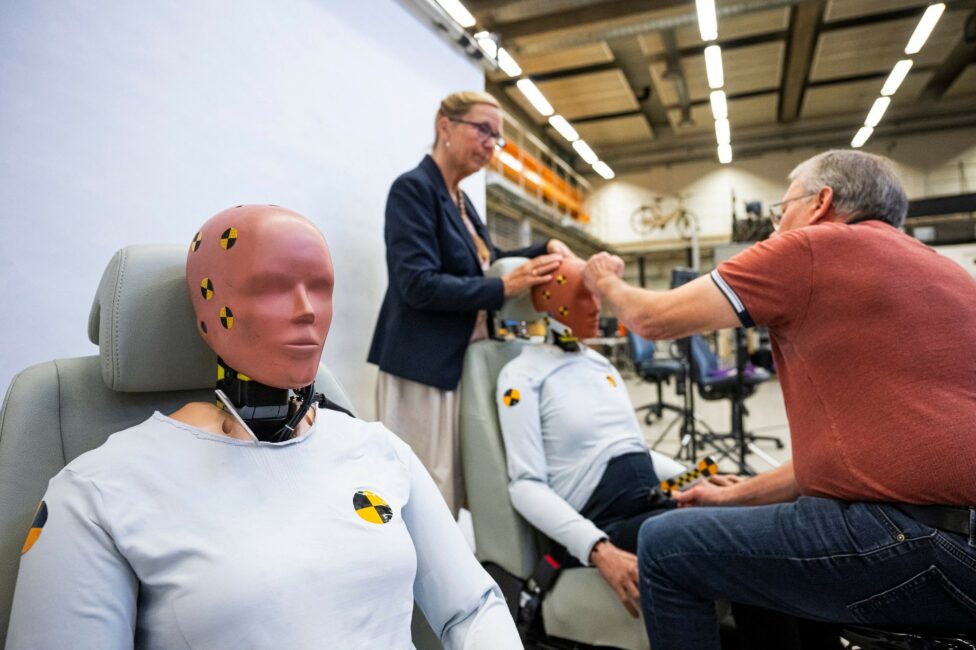Women in the driver’s seat with female crash test dummy

Legislation only requires carmakers to conduct crash tests with dummies based on male proportions — a model dating back to the 1970s — even though statistics show that women are more at risk of injury in the event of a frontal collision.
Carmakers have used smaller-sized versions of male dummies to represent women and children, but those have not taken into account the different morphology of women’s bodies.
Astrid Linder, an engineer at the Swedish National Road and Transport Research Institute (VTI), decided to change that with “the world’s first average-sized female crash test dummy,” according to VTI.
In a warehouse in Linkoping, 200 kilometres (125 miles) south of Stockholm, the female dummy is strapped into a car seat projected along a metal rail at 16 kilometres per hour (10 miles per hour), before being brought to a sudden halt.
A screen shows the body moving in slow motion at the moment of impact, the mannequin’s chest visibly distinguishing it from a standard male crash test dummy.
“The muscles in the neck are normally weaker in a woman,” says Tommy Petterson, one of Linder’s colleagues at VTI, pointing to the nape of the dummy’s neck, deformed by the impact.
“If you compare it with a male dummy, this neck is more flexible and has more movement.”
Narrow shoulders, wide hips
Tested in Sweden since late 2022, the female prototype made of rubber, metal and plastic is fitted with 24 sensors, measures 162 centimetres (5 feet 3 inches) and weighs 62 kilogrammes (137 pounds). That is 15 cm and 15 kg fewer than a male crash test dummy.
Her shoulders are also narrower and her hips wider.
These differences, as well as a lower centre of gravity, play an important role in evaluating the risks women face in a car accident.
“For non-fatal injuries which can lead to disabilities, statistics show that the factor that always stands out is the difference between men and women,” Linder told AFP.
“The resulting suffering can last a lifetime. It is essential to establish how everyone can be protected.”
According to a 2019 study from the University of Virginia in the United States, women are 73-percent more likely than men to be injured in the event of a frontal collision.
They are also twice as likely to suffer whiplash injuries in an accident because of the morphology of their necks and the design of neck supports in cars.
‘Excluding females’
Linder’s female dummy, developed with subsidies from the European Commission, is already being used by some carmakers, including Volvo in Sweden.
But there are no international regulations requiring manufacturers to do so.
“In the regulation it says you have to use the model of an average man for all the testing, full stop,” lamented Linder, who also teaches auto engineering.
She was honoured earlier this year with a prize celebrating women’s contributions to the auto industry. But the market has yet to pick up speed.
“In our society and culture, for a long time we focused on keeping men safe in vehicles because initially that’s how the culture was. It was predominantly men that were driving,” explained Emily Thomas, head of automobile testing at the US non-profit organisation Consumer Reports.
“And even though the culture shifted, unfortunately the safety innovations didn’t shift along with it,” she said.
Linder urged legislators to get on board.
“We are aiming for a sustainable society and an inclusive society, and we have legislation which is excluding females at the moment,” she said.
She hopes to make more copies of SET 50F to spread the word around the world.














